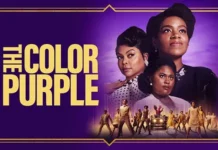“Faced with a reality, which reason could not solve, I turned to art and religion for comfort. It was these, and these only, that could call through the night, could communicate, could make sense, make more intelligible—and tolerable.” –Oliver Sacks, A Leg to Stand On
In early recovery from benzodiazepines, my life was all about survival: getting through the day, white knuckling through the symptoms, trying to get some sleep at night, rinse and repeat.
My days consisted of getting up, going for a walk, and spending the rest of the day trying to ground myself in something comforting, which usually meant turning to online support groups and talking with people who were also recovering from benzodiazepines. It was all I could do, it was all I could think about; the symptoms were so powerful that nothing else could exist. This went on for several years.
Finally, some space began to open up. My nervous system began to heal to the point where it could vaguely settle down and my cognition was slowly creeping back. I could do something besides endure. I could create. I started with watercolor painting. Over time, my painting really improved. I was able to channel feelings into my paintings, and seemingly purge them, transforming them into something visible. Something I could share. I could finally share the inexplicable experience of benzodiazepine withdrawal through my paintings.
Painting and creating were often the only thing that kept me going on some days. The experience of recovery from benzodiazepines, the resulting seemingly unendurable and unending (a symptom itself) mental, physical, spiritual and emotional pain somehow became a catalyst of intense purging. Some days, I would paint for 12 hours. I began using my obsessive energy (one of my symptoms) and my newly acquired ability to intensely concentrate on one thing (my ability to take in a lot of information was very affected) and I would pour all of my mind’s energy into painting and creating an image that might convey to others what I was experiencing internally. The experience of recovering from benzodiazepines is so intense that words and images do not do it justice. It is literally outside the realm of understanding for most people since they have never lived it. Their minds are therefore incapable of fully grasping the enormity of the pain and suffering. But through my paintings, I felt, for the first time, that I had some sort of external release. It served as a distraction, which was helpful, but also as a release.
I joined a Facebook group about using art to heal from psychiatry, and it inspired me. Seeing the art of others on a similar path moved me to consider creating a book. Reading a book was impossible for me during early recovery — since my cognition/memory, eyesight and ability to concentrate suffered, reading novels became impossible. But I could still appreciate art and read in short bursts. Having a book of art made by others on the same path would have been a comforting, distracting, and useful resource. Thus began my journey of creating Healing from Psychiatry: The Artist’s Perspective.
I began reaching out to other psychiatric survivors. I asked them whether they would like to have their art featured in a book, and the response I received was amazing. People openly shared not only their art but their personal stories, their feelings, and their painful journeys into, through, and out of psychiatry. Creating this book helped me to slowly see beyond my own pain, and see that there were thousands of others who were also in pain because of psychiatry, whether due to psychiatric medications, shock therapy (ECT), forced inpatient stays, or harmful and restrictive diagnostic labels.
Before making this book, I was mostly aware of “benzodiazepine survivors” but I didn’t have much knowledge or understanding about other situations where people were harmed by psychiatric treatments. Creating this book, and hearing the stories of people who were badly injured from shock therapy, antidepressants, antipsychotics, etc., really opened my eyes to the fact that participating, as a patient, in the treatment modalities of psychiatry is extremely risky.
I also noticed that the bulk of the submissions for the book were coming from women. I have read that women tend to be treated for mood issues more than men. Some speculation about this has been that women are dealing with the ups and downs of hormones, women seek out treatment more than men, or that women’s healthcare needs are not taken as seriously as men’s and it is easier to “throw a pill” at the problem than to really get to the root cause. Or it could be that there are just as many men out there dealing with psychiatric damage but they are less likely to reach out for community support, and if they do, might be less likely to openly share.
There were several submissions from women who were medicated with psychiatric drugs because of hormonal issues. One woman featured in the book had an anxiety reaction when she was taken on and off different brands of birth control. She ended up being medicated on countless psychiatric drugs as a result of her reaction to these fluctuations in her hormone levels. Several other woman in the book were medicated after giving birth to their children; they were diagnosed with postpartum depression because of the normal fluctuations in hormones that occur after giving childbirth.
Many of the contributors talked about how when they were on the psychiatric medications their creativity and ability to be artistic was completely blunted by the drug’s effects. They ended up living a blunted half-life and lost the ability to create or feel inspired to create. A big part of healing from psychiatric drugs was getting this creative flow back. Dr. Heather Ashton also spoke about this in the foreword of the book. In her clinic, as she discontinued patients from psychiatric medication, she witnessed as a “new creativity came bursting forth.” She says it was as if the drugs had locked up people’s innate abilities which came bursting forth when they were at last drug-free. Ashton says this new creativity was unlike any creativity they had experienced even before the drugs. I sometimes wonder if the brain is forced to go in a new direction because of the recovery process. The brain is forced “up against a wall,” so to speak, and might create new neural pathways that are more creative and allow the brain to “make sense of” and “process” what it is experiencing.
The stories in the book are deeply personal and most are poignant. A shock therapy survivor who lost 30 years of working memories after the shock. A woman who went psychotic after discontinuing a benzodiazepine which she had been on for 20 years for insomnia. Story after story of people fighting for their lives, to regain their health, and get back to the person they were before psychiatric intervention. It is painful, but it is also beautiful. You can feel the resilience and creativity of the human spirit within the pages of this book.
The outpouring of support and submissions for the book was very healing. I had lost touch with my life and community from “before benzodiazepine injury,” and now I had a new community who understood my situation and we could relate to one another. Recovering from psychiatric drugs and treatments can be incredibly isolating, so this community became like a second family to me. This quote from Oliver Sacks book captures the way I feel about the “psychiatric recovery community”:
“This sharing of normally hidden and private feelings—feelings, indeed, often hidden from oneself—and the depths of concern and companionship evoked, the giving and sharing of priceless humor and courage—this seemed to be remarkable in the extreme, unlike anything I had ever know and beyond anything I had ever imagined. We had all been though it—sickness and fear—and some of us had walked in the Valley of the Shadow of Death. We had all known the ultimate solitude of being sick and put away, that solitude ‘which is not threatened in Hell itself.’ We had all descended to great darkness and depths—and now we had surfaced, like pilgrims who had taken the same road, but a road, thus far, which had to be travelled alone. The way ahead promised a quite different passage, in which we could be fellow-travelers together.”
Through our collective storytelling, we can educate the world about the dangers of psychiatric medications and treatments so that others will not endure the unnecessary and sometimes unendurable suffering that we have. In the conclusion, I wrote about how I had misinterpreted normal, albeit difficult emotions as a “mental illness” and that my psychiatrist had agreed. The process of creating this book ended in the realization that I never needed fixing. This process into, through, and out of psychiatry has caused me to re-examine our culture’s tendency to go for the quick fix of medications and aggressive medical treatments, instead of respecting the body’s inherent ability to heal itself if we take the time to slow down from our high-pressure, fast-paced culture and listen.
The book touches upon the struggle of recovering from psychiatry, and highlights the strength, creativity, and perseverance the journey can evoke. It highlights many stories of people who have walked the path to recovery, have healed, and want to share hope with people still struggling. From a practical point of view, I hope that this book raises awareness in some way about the potential dangers of current psychiatric practices. There is currently very little medical support for people who end up harmed by psychiatric treatments. Many who are harmed end up receiving no acknowledgement from their doctors, friends, or families, and many are disabled by these treatments and without support.
Since there are so many contributors in this book — upwards of 60 — I hope that family members who are having trouble understanding their loved one’s iatrogenic illness from psychiatric drugs and treatments will see that this is not an uncommon occurrence. Their loved one is dealing with a “real” illness that affects many people and is currently horribly misunderstood by the medical community. It is imperative that we raise awareness about this population of people so that they can receive support while they heal.















I have downsized into a tiny home so buying a book of this size is impractical for me. I did not see an ebook option so I hope you will consider an electronic version. As an artist myself, I would love to support this.
Report comment
This book sounds wonderful! Folks don’t often have access to a post-benzo success story that is, at once, beautiful and told by a community of psychiatric survivors. I’m TOTALLY going to buy this book! Kudos to you!
Report comment
Looks very cool, kudos to you. As one who is also an artist, I wish you had a call for artists on MiA, but I’m working on my own book, too. It’s possible the art history books from this time will some day be filled with a lot of anti-psychiatry artwork, or at least I see a lot of anti-pill artwork in the local galleries. And apparently the art history books will also be filled with the satanic/pedophile artwork that’s popular with the Hollywood/DC crowd, like Marina Abramović’s work and that collected by Podesta, et al.
How inconvenient I became a Christian/Judaeo artist, since that’s what has filled the art history books throughout history, in a time when attacking those who believe in God is all the vogue, particularly by the psychiatric industry. But I do have a church, which knows my family made them millions, who is now seemingly a bit embarrassed, thus seemingly trying to attempt to support the visual arts now.
Take, take, take, take, oops, you took too much. For a society to function in a mutually respectful and appropriate manner, all professions need to be paid and respected. Including those who actually make high quality products, not just the insanity fest of today’s totally fiscally irresponsible and seemingly satanically controlled financial sector, and the psychiatrists who’ve aided and abetted in covering up their pedophilia sins en mass, according to their own medical literature.
Good luck with your book. Pardon my candor, but we do need to discuss reality, if we are ever to improve our society.
Report comment
I agree with the other posts. This is an idea beyond “wonderful.” Art heals naturally; unlike toxic drugs, therapies, and associated Garbage. Religion; at its best, when it’s done in Truth; does the same. Psychiatry attempts to be a religion and fails on all accounts. ( I have heard some say that current politics is also trying to become a religion.) Both are false religions and hurt.
As for my personal story; I, now know that I was falsely and basically diagnosed for being who I am and for just going through the changes and challenges of life; including losing my best friend and sister to cancer and doing the what should I do as a career thing?
I now realize that I operate from a natural born artistic, visual-oriented, “right-brained”, imaginative, intuitive, poetic perspective and that is just me. I tell my mother; who still doesn’t quite understand me; it’s too late to change me now!
However, I would like to add :Please do a Book 2, maybe even a Book 3, 4, etc. There are so many of us could benefit from telling our stories through the various forms of art from painting, drawing, crafts, to music, literature, poetry, etc. I think this may be a fantastic way to get our story across without the terro of hostility; etc.
Report comment
I’m so looking forward to receiving this book. I ordered it immediately. Thank you so much for organizing and sharing all these stories and talents in such a creative way. I wish you continued recovery beyond your wildest dreams.
Report comment
Alison
Thanks for this blog on the role of art in the healing process AND its role in changing the world. Your spirit and activism is a truly transformative force in this important struggle against psychiatric oppression.
Richard
Report comment
Hi Alison
Thank you as well for this. I feel that I will always be on a path of healing from psychiatry. I needed this reminder to continue to fight the idea of caving to taking anything to alleviate distress of what I believe to be a mild brain injury and an iatrogenically induced case of bipolar and other diagnoses. My famous last words, “it’s complicated! How much time do you have?” It is difficult. I will look into the purchase of your book.
I know the hell and beyond of the journey and concur with all you have said along with the commenters. My marriage and over half of my family were lost to me due to it all and then some. They believed I ought to have remained medicated. I naturally went rather berserk for some time following withdrawal.
Micro-managing life has been the normal for the last at least 5 years. The only thing that kept me going was God and this shear fortitude and intense resiliency that came from somewhere deep in my being. Art in its various forms, constant writing and reading, lots of sleep or not, listening to my body and “I can only do what I can with what I have”, and accepting it was my constant activity. I thank God my parents’ display of unconditional love remained. They bore the brunt of so much.
Dealing with the trauma is key. But I will admit, sometimes the trauma, loss and medication withdrawal can be too much for some including myself. I had to resort to medications for a short stretch over a year ago and I have had to accept that I may have to again in the future. Medications can have a place in it, but on the whole, not. It in part is a sad testament to the world we live in.
I wish and pray you and each person who comes across your blog continued healing.
Laurie
Report comment